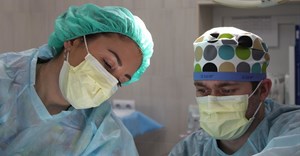Trending
Elections 2024
Surgery, not antibiotics, should remain first-line treatment for appendicitis

Treating appendicitis with antibiotics as an alternative to surgical removal of the inflamed organ was found to be more costly in the long term and result in higher rates of hospital readmissions, according to a study by researchers at the Stanford University School of Medicine.
“People treated with antibiotics alone have a higher chance of coming back needing further treatment for appendicitis-related problems, such as abdominal abscesses,” said Dr Lindsay Sceats, a surgical resident and lead author of the study. “They also have a higher risk of having a reoccurrence, and the cost is no lower.”
Appendicitis is an inflammation of the appendix, a finger-shaped pouch that projects from the colon on the lower right side of the abdomen. Acute appendicitis, if left untreated, can result in a ruptured appendix that can spread infection throughout the abdomen and be life-threatening. It occurs in about 5 percent of the United States population, according to the National Institutes of Health, and is most common before the age of 30.
While appendectomy has long been the standard treatment, some physicians have begun offering drug therapy as an alternative, primarily to patients who are poor candidates for surgery, following the publication of several European studies showing positive outcomes.
“More and more patients in the Stanford emergency room have been asking about whether they can just take antibiotics when they come in with appendicitis instead of having surgery,” Sceats said. This study was designed, in part, to help answer that question.
Analysing claims data
To conduct the study, researchers used claims data from a private insurance database to compare patients admitted with appendicitis from 2008 through 2014. Of the 58,329 patients with appendicitis, 55,790, or 95.5 percent, underwent appendectomy. The remaining 4.5 percent were treated with drug therapy alone.
Results showed that, surprisingly, overall costs were 5.5 percent higher for patients who didn’t have the surgery. The average cost of care was $14,932 for these patients. For patients who underwent the surgery, the average cost of care was $14,186.
“Even if the initial hospitalization is cheaper, when you look at long-term cost, which our study did, it ends up being more expensive,” Sceats said. The study collected medical care data for patients after treatment for up to an average of three years.
“People treated with antibiotics are more likely to come back and be hospitalised for any sort of belly pain,” Sceats said. “Doctors may also be more cautious when the appendix isn’t removed. This extra caution can be expensive.”
The study also found slightly higher rates of abdominal abscess post-treatment for those who didn’t have surgery.
Low recurrence rate
The study did show that the recurrence rate of appendicitis is only 3.9 percent among those treated with antibiotics alone and pointed out that surgery comes with its own risks of postoperative complications, but the authors concluded that overall results suggest appendectomy should remain the first-line treatment for most people with appendicitis
“These results tell us that, in most cases, surgery is still the best strategy,” Sceats said.“For your average, healthy 30-year-old, the alternative treatment is no cheaper, and it’s easier to have the surgery. You also no longer have an appendix, so you’re no longer at risk of having appendicitis again.”















